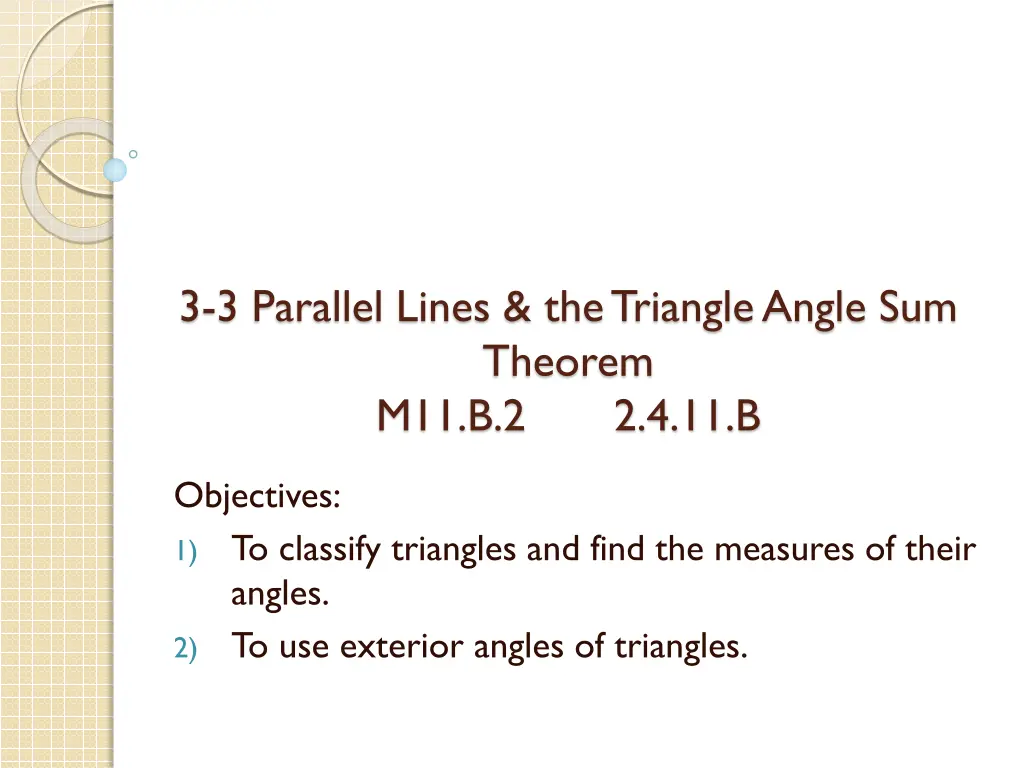
Understanding Triangle Angle Sum Theorem and Triangle Classification
Explore the Triangle Angle Sum Theorem, classifications of triangles based on angles and sides, and practical examples involving triangle calculations. Learn about exterior angles, remote interior angles, and triangle properties.
Uploaded on | 0 Views
Download Presentation

Please find below an Image/Link to download the presentation.
The content on the website is provided AS IS for your information and personal use only. It may not be sold, licensed, or shared on other websites without obtaining consent from the author. If you encounter any issues during the download, it is possible that the publisher has removed the file from their server.
You are allowed to download the files provided on this website for personal or commercial use, subject to the condition that they are used lawfully. All files are the property of their respective owners.
The content on the website is provided AS IS for your information and personal use only. It may not be sold, licensed, or shared on other websites without obtaining consent from the author.
E N D
Presentation Transcript
3-3 Parallel Lines & the Triangle Angle Sum Theorem M11.B.2 2.4.11.B Objectives: 1) To classify triangles and find the measures of their angles. 2) To use exterior angles of triangles.
Triangle Angle-Sum The sum of the measures of the angles of a triangle is 180. m<A + m<B + m<C = 180 C A B
Example: Find the missing value Find m<Z Z 67 48 X Y
Example: Find the missing value Triangle ABC, <ACB is a right angle, and CD AB. Find the values of a, b, and c (Textbook page 133 - TE) T
Ex: Find the value of x, y, and z. (textbook page 132) G F J H
Classify Triangles: by Angles Equiangular Acute Right Obtuse
Classify Triangles: by Sides Equilateral Isosceles Scalene
Vocab An exterior angle of a polygon, is an angle formed by a side and an extension of an adjacent side. For each exterior angle of a triangle, the two nonadjacent interior angles are its remote interior angles. Triangle Exterior Angle Theorem. m<1= m<2 + m<3






















